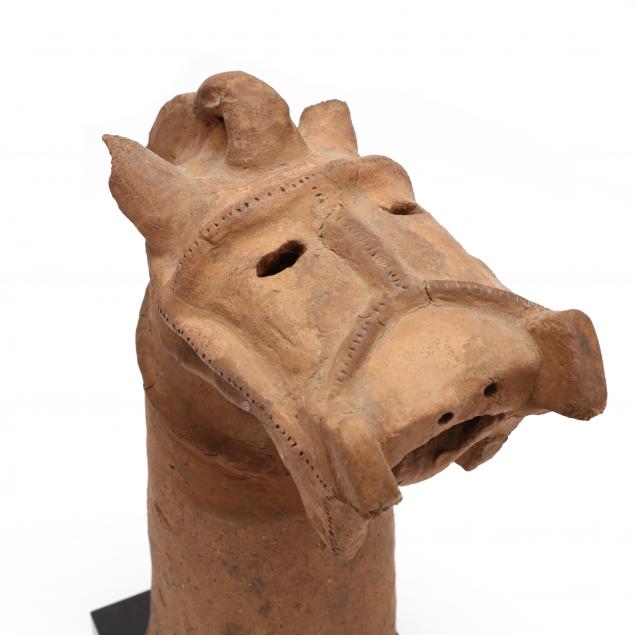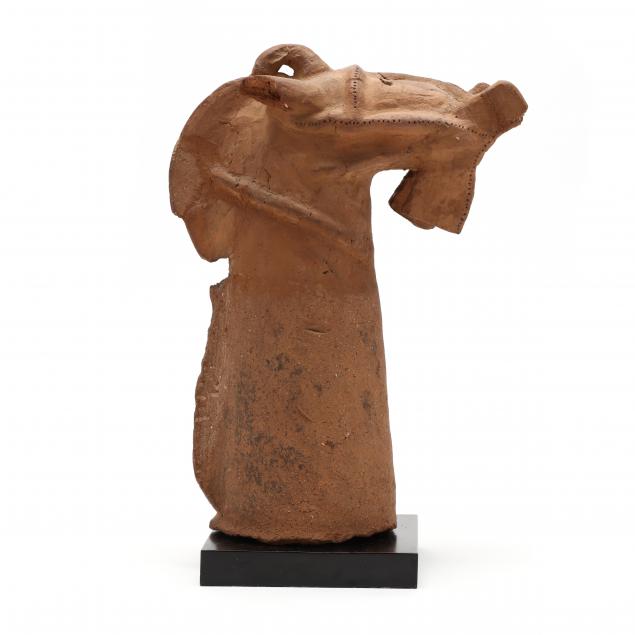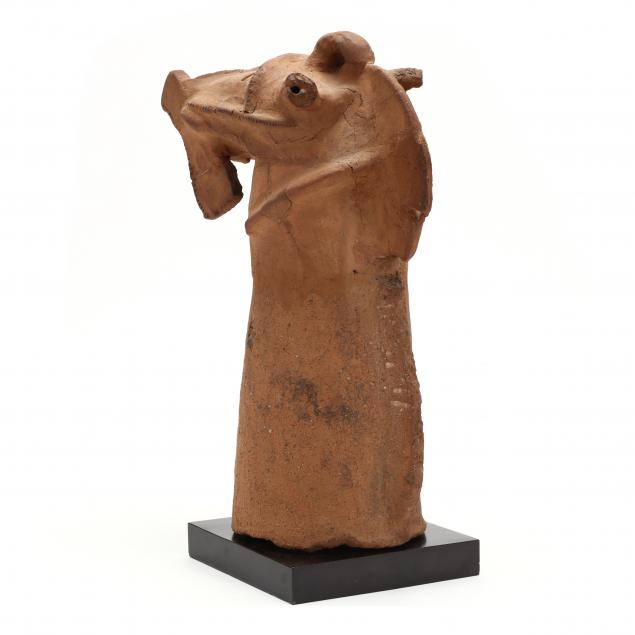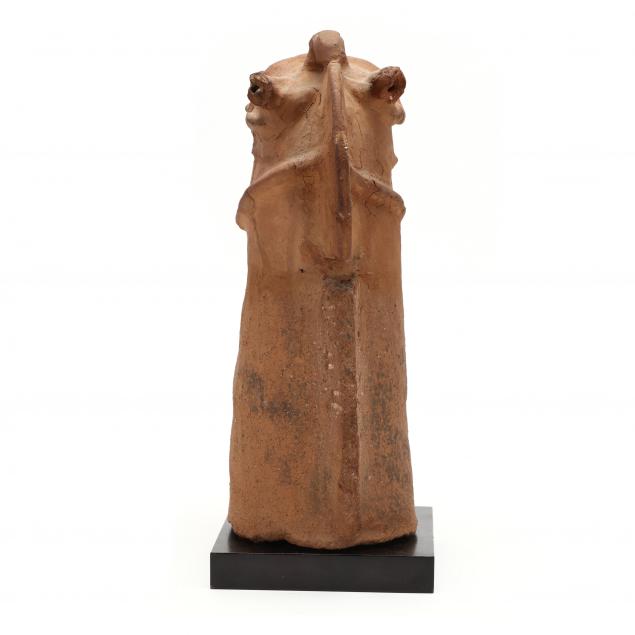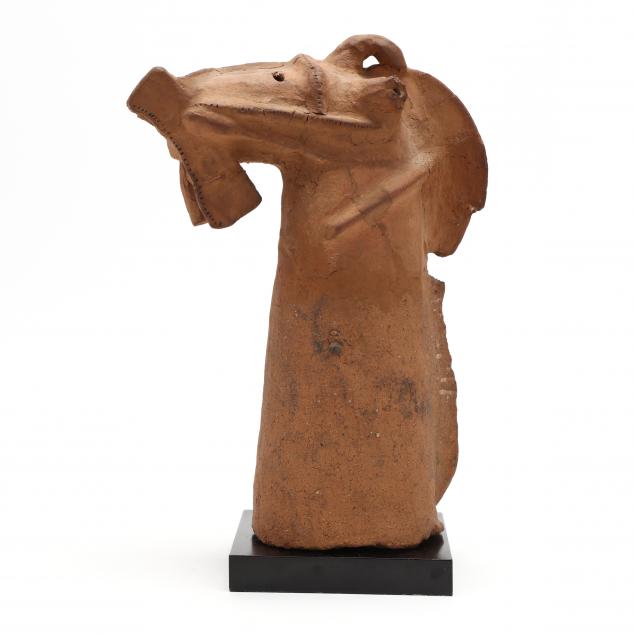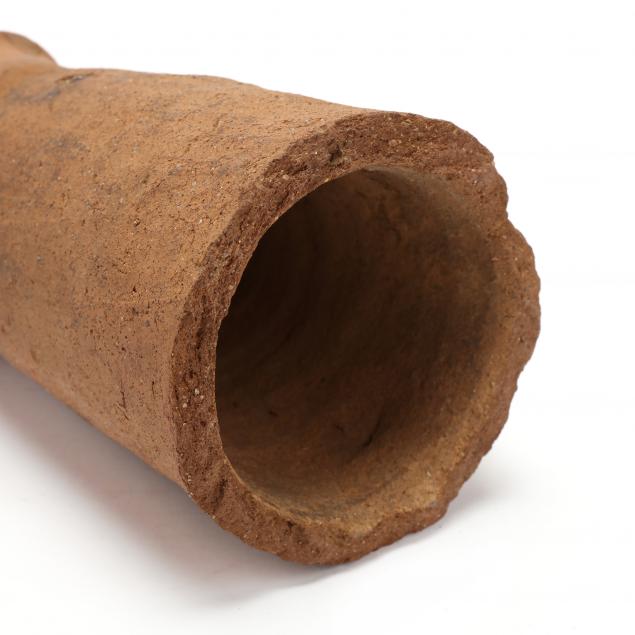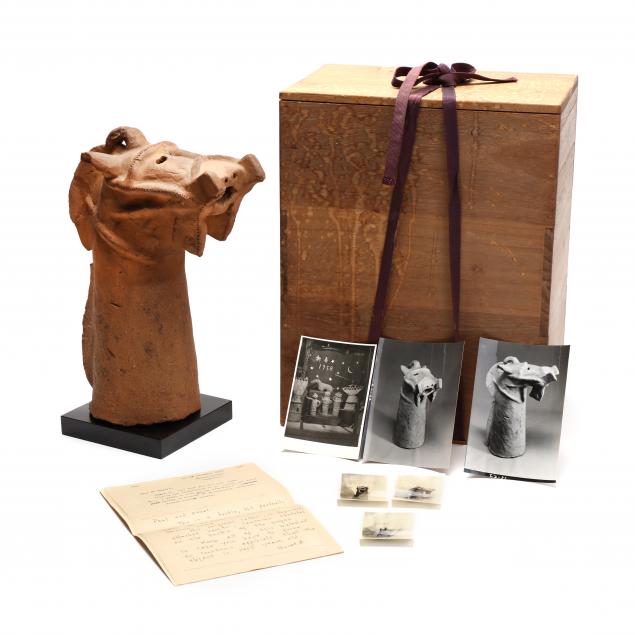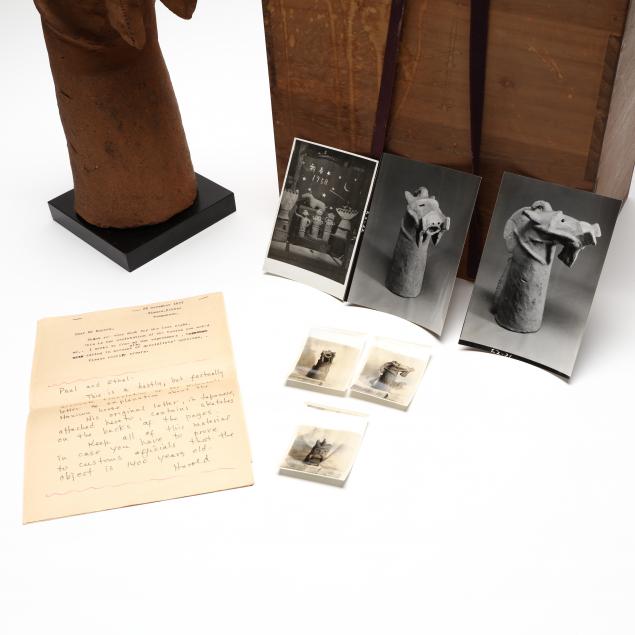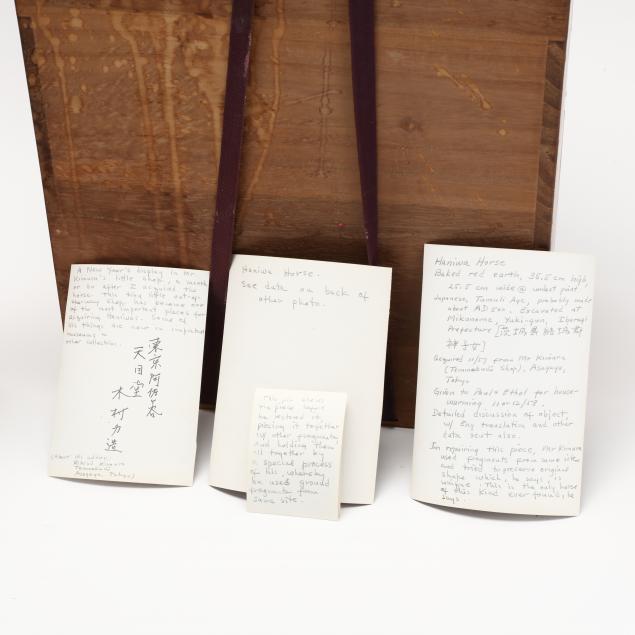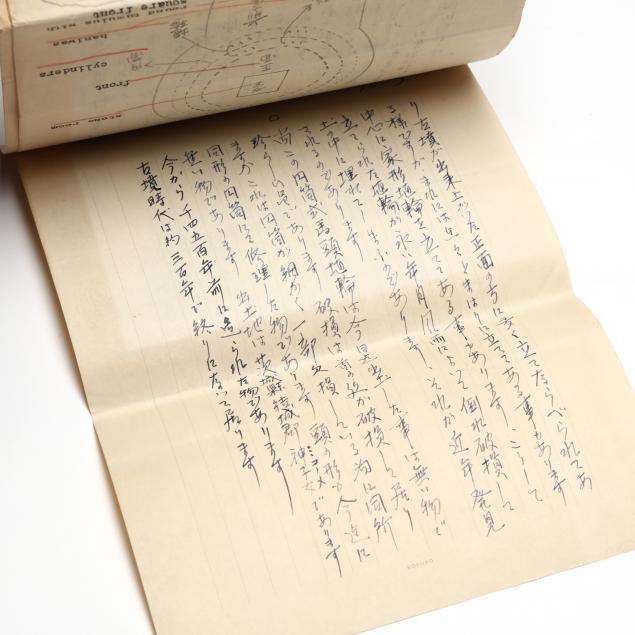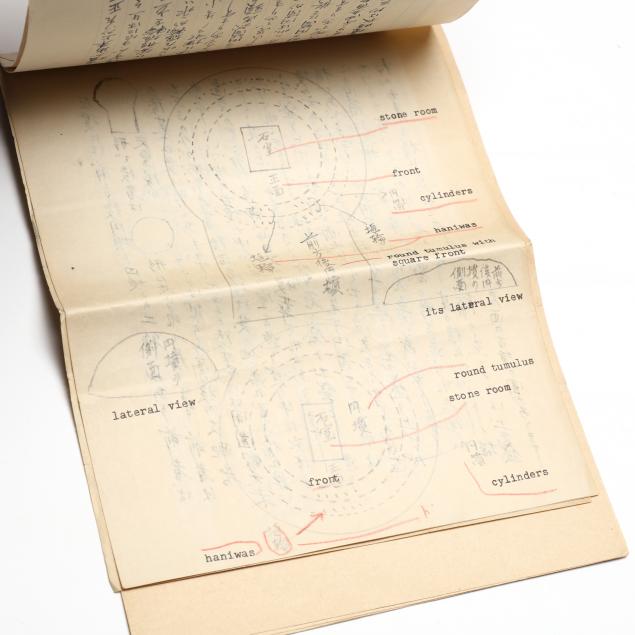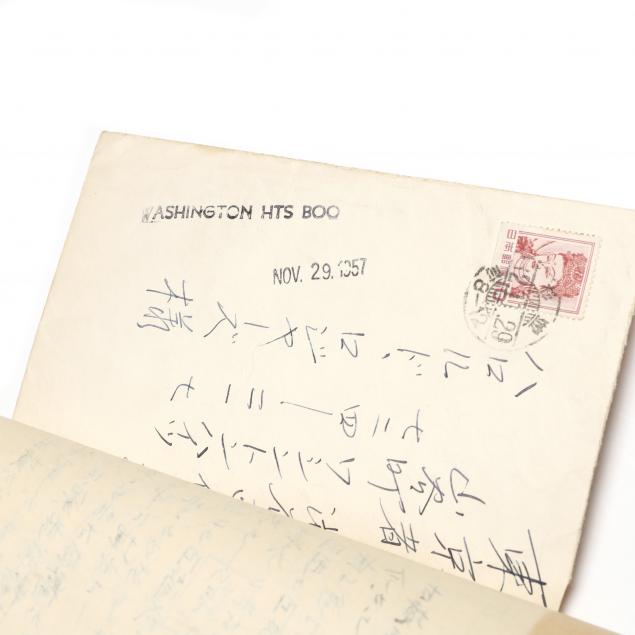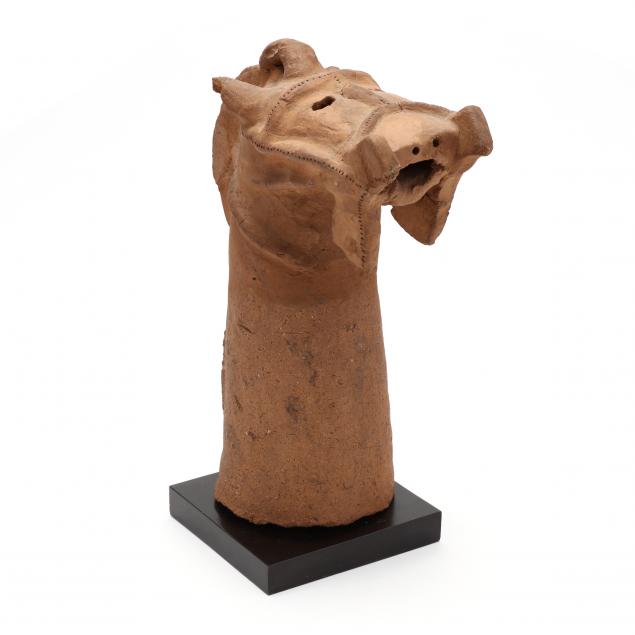
Lot 130
A Rare Japanese Haniwa Horse Cylinder Sculpture
Lot Details & Additional Photographs
13 7/8 x 5 1/2 x 10 1/4 in.
Private Collection, New York and North Carolina
By descent from Ethel Novello, New York, New York
Ethel Novello was an art collector and fashion designer in New York City. She specialized in swimsuit design, clothing contestants for the Miss World Pageant, and her designs were featured in various publications throughout her career. Ethel's brother-in-law was a professor in Japan, and through this connection she acquired much of the Asian artwork offered here at auction.
Ethel's family had a long-time presence within the New York entertainment industry. Her mother, Ethel Novello McAssey, was a Broadway dancer. Her uncle was the famous Armando "Toto" Novello, also known as "Toto the Clown." Based in the Bronx, he was a traveling performer and silent film star throughout the early twentieth century.
Haniwa figures such as this one lined the contours of the enormous keyhole shaped burial mounds surrounded by a moat constructed for the wealthy during the Kofun period in Japan. Haniwa were mainly figures or animals and were placed at the entrance of the tomb facing outward, not buried, as they were meant to be seen. The sculptures functioned as attendants to the departed and guardians of the tomb.
Repaired in Japan with pieces found at same excavation site; the horse has not been scientifically tested for age.
$1,000 - 2,000
